
I feel as if I grew up with Rosemary's Baby. It scared the living crap out of me as a child, and I still get the crap scared out of me every time I re-watch it. To this day I don't trust Ruth Gordon, and if Cassavettes wasn't one one of my director gods, I'd be very wary of him too. But they're dead now, and they can't hurt me...or can they???
Here's some psychological horror from the great Roman Polanski working within the soul-stealing Hollywood system. Hopefully one day I'll get around to posting the other two pieces of the Apartment Trilogy, but for now, enjoy this classic film and a really cool featurette.
From Pedro Blas Gonzalez at Senses of Cinema:
Rosemary’s Baby is a complex film that works on several levels. On a patent level, it evokes the horror and fright that audiences seek in films of this genre. Yet this description is rather misleading in that this film’s horror is all of a “close room”, psychological variety. Ultimately, the film can be regarded as an exquisite study of the relation between appearances and reality, showing us how the careful planning of crafty, evil people clouds young mother Rosemary’s sense of morality. Those seeking the rewards of being frightened through the use of visual stimulation will miss the point of this film altogether. Rosemary’s Baby is a sinister film that is made convincing through the patience displayed by those who entertain malefic motives.
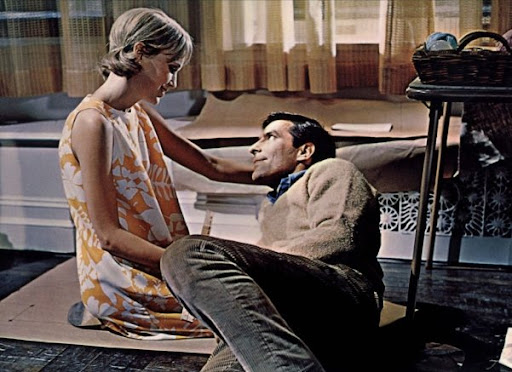
The film opens with an aerial shot of Manhattan and Central Park. The camera then settles gingerly on the legendary New York landmark, The Dakota, an imposing, gothic, castle-like structure. The Bramford, as this apartment building is called in the film has a storied, though strange past, as Rosemary (Mia Farrow) and her husband, Guy Woodhouse (John Cassavetes), are told. As it turns out, no situation, event, gesture or nuance is gratuitous in Roman Polanski’s fine film. It is no mere coincidence that Rosemary and her actor husband should move into this grand place. Of course, at first these two young people do not suspect or believe that anything supernatural has ever taken place in the dark, maze-like interior of this historic building, but they are warned nonetheless: “This house has an incidence of unpleasant happenings”. The building, it appears, has a history of infant mortality and Satanism. Mrs. Gardenia, the old woman who used to live in the apartment that the Woodhouses move into, was a friend of the Castevets (the elderly neighbourly couple who ultimately prove to be the leaders of the coven of witches). She grew magical herbs for them.

Part of what makes this film work so well is the counterpoint that takes place between Rosemary’s claustrophobic, isolated existence away from family and friends, and the few scenes of her walking on the streets of New York. Rosemary is seemingly held captive by invisible forces that do not allow her to stray away from her apartment for too long. But these forces are defused through Guy’s and the Castevets’ baleful ambitions. From the start of the film, Guy comes across as rather shallow while Rosemary seems merely naïve.
The subtlety of evil that the film presents is successful because of the exquisite timing deployed to tell the story. Rosemary’s Baby provides a measured depiction of evil within Rosemary’s day-to-day environs. Rarely are cinematic characters as sinister, yet likeable as Minnie Castevet (Ruth Gordon), Roman Castevet (Sidney Blackmer) and Dr Sapirstein (Ralph Bellamy). Minnie and Roman are truly black-hearted people. Seemingly quirky and nosey, they hide their true intentions behind an outwardly loving and giving veneer. The Castevets never flex their muscles or twist anyone’s arms until the very end of the film. They do not have to. Guy has made a selfish and evil pact with them, and Rosemary lacks the necessary perspicuity to see through their intentions. The Castevets work their web of deception by jabbing a path through the unsuspecting ways of moral simpletons. This is enough to debilitate Rosemary’s resistance until the end of the film, when they must explain and justify the existence, and her carriage of the devil’s son.
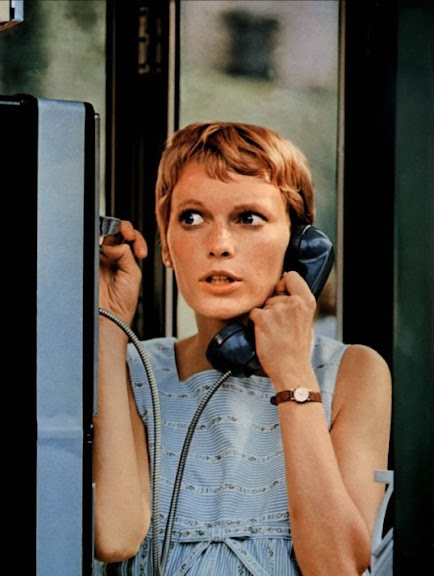
After Terry, a girl that she and her husband have taken in commits suicide, Mrs Castevet comes to Rosemary’s apartment to thank her for helping the police figure out the girl’s identity. But Mrs Castevet quickly changes the topic from the girl’s death to Rosemary’s interior decoration. This serves as a sign of things to come, especially in terms of the control over people that the Castevets enjoy. Minnie is a seemingly perfect “picture” of a shallow and callow entity.
The initial control over Rosemary that these two Satanists will come to enjoy takes place through an off-camera deal they have made with Guy: the Castevets vow to help make his acting career triumphant if he will facilitate the impregnation of his wife by Satan himself. This is essentially the plot of the film. Yet it works phenomenally well precisely because this baneful pact takes place off-camera. It is only over time that we learn that the Castevets, Dr Sapirstein, and all their friends are part of a web of devil worshipers that dates back to the 1800s, to the infamous Satanist Steven Marcato, Roman’s father.
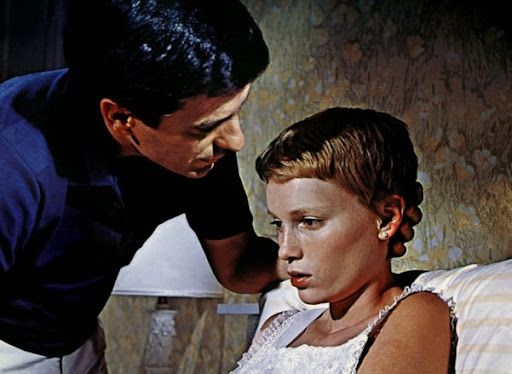
Rosemary’s Baby, like The Omen (Richard Donner, 1976) and many other films in this genre, deals with the topic of the Devil’s progeny. These two films are, however, the most effective and convincing entries in this subgenre. The chilling culmination of Rosemary’s Baby’s horror is made evident at the end of the film when the entire plot is revealed to Rosemary – and the audience. Roman tells her to “Be a mother to your baby”. And when Rosemary complains: “What have you done to his eyes?” Roman nonchalantly tells her, “He has his father’s eyes”. The entire spectrum of the horror that engulfs Marcato’s past, the apartment building, Mrs. Gardenia, Terry’s death, and the Woodhouse’s decision to move into this building is revealed when Roman tells Rosemary that she was chosen – an inversion of Christ’s virgin conception.
Whether Rosemary eventually comes to accept her son is left up to the discerning viewer. However, perhaps the most intriguing question raised by Rosemary’s Baby is whether a mother can care and hold maternal feelings for such a monstrous offspring. Roman Castevet seems to think so.
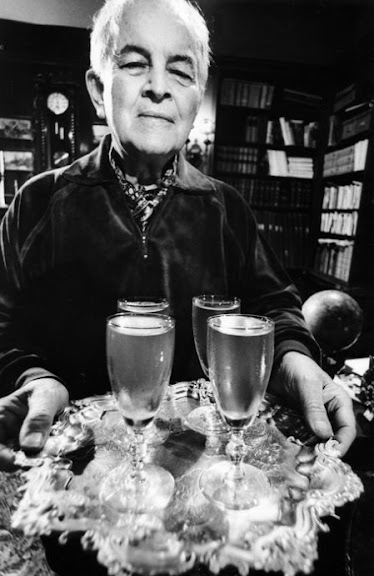
"Before, I would criticize a society, like in "A Knife in the Water," I gothung up on a sort of, as I said, the problem of one society, one country, like Poland. But, wherever you go, the seed of evil is within the way the human being thinks, the way he takes things for granted. Certainty, I would say, is the seed of evil.
Everyone is certain of something, of his reasons, his ways. Religion is the best example of it. A man born in a Catholic country and in a Catholic family will defend his faith and his country, which were given to him by his parents, and if he is strong enough, or has enough courage, he will kill for them, or he will die for them. While the same baby, born in India, would fight, die or kill for just the opposite principals of a different religion. Now, why does be do this? Is he basically bad? No. This is his nature. He takes things for granted, things appear to him as they are and he fights for them because he believes in them.
That's what I would like to do and what I would like to say in my films. It's not that I'm interested in metaphysical aspects. No. They are just charming to me, and they are entertaining to me, like they are to kids. But, if I don't say anything important in my films, it's because I find it too difficult to say. If I know what I want to say, I say it... Everyone thinks he knows the truth, but it may not be your truth. Everyone has their own."
-Roman Polanski
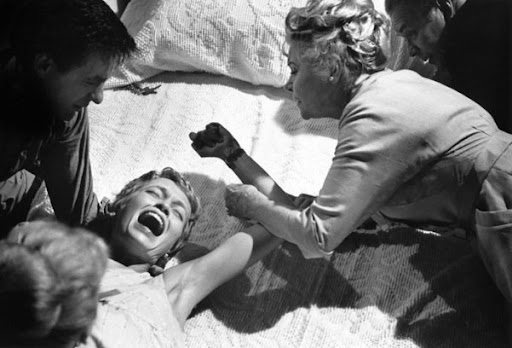
Technical Information:
Title: Rosemary's Baby
Year: 1968
Country: USA
Director: Roman Polanski
Source: DVD9 Retail
DVD Format: NTSC
DVD Size: DVD9
Container: .iso + mds
Size: 7.85 GB
Length: 2:16:34
Programs used: unknown
Resolution: 720x480
Aspect Ratio: 16:9 anamorphic widescreen- 1.66:1
Video: MPEG2 @ ~6800 kb/s
Frame Rate: 29.97
Audio 1: Dolby AC3 English stereo @ 192 kb/s
Audio 2: Dolby AC3 French stereo @ 192 kb/s
Subtitles: cc-English
Menu: untouched
Video: untouched
DVD Extras:
-interviews with director Roman Polanski, producer Robert Evans and production designer Richard Sylbert
-making of Rosemary's Baby featurette (featured above)
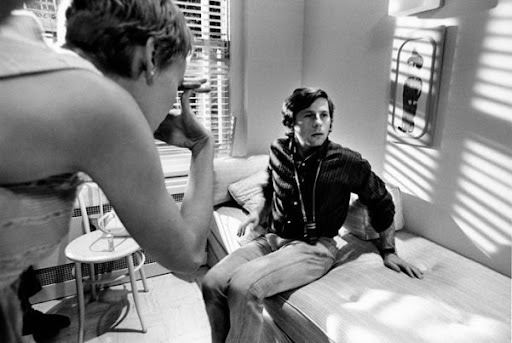
Rosemary's Baby Megaupload Links


